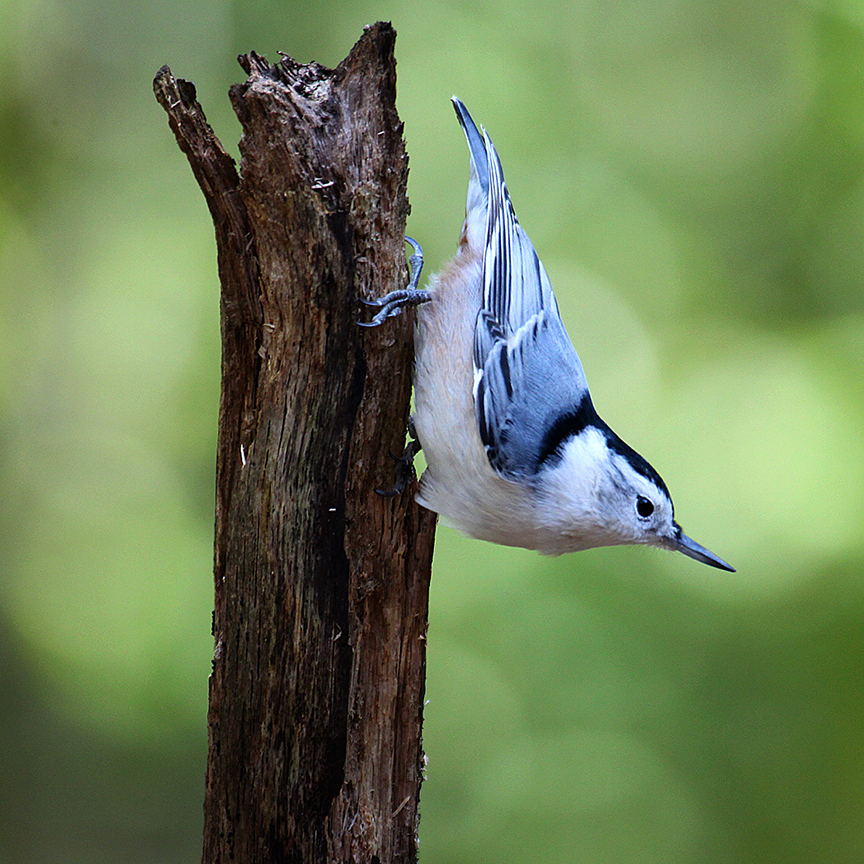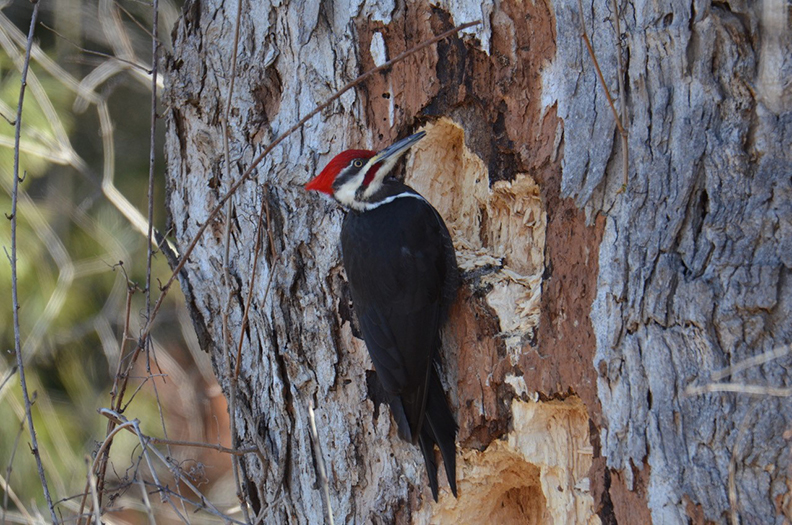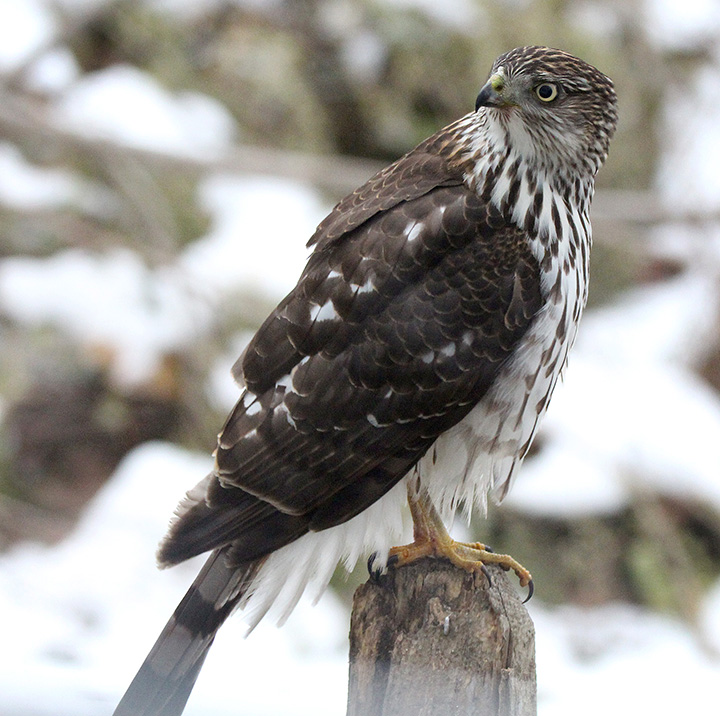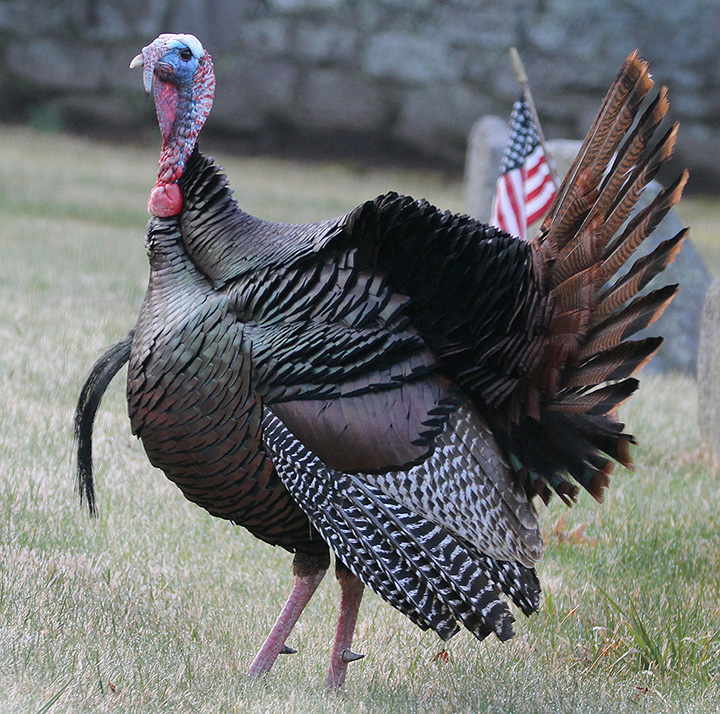The White-Breasted Nuthatch

PHOTO: A white-breasted nuthatch clings to a dead branch in New England, September 2020. Chris Bosak Photo

by Chris Bosak
Weirs Times Columnist
Have you noticed an exceptional number of white-breasted nuthatches at your feeders this fall? If so, you’re not alone and migration is the likely reason.
We don’t typically think of white-breasted nuthatches as migratory birds. They are reliable backyard feeder birds and year-round residents, just like chickadees and tufted titmice. Do they really migrate?
I’ll get to a recent article that describes the white-breasted nuthatch’s irregular migration habits in a minute, but first let me share some information you get when you do an internet search on the subject:
“Because they do not migrate, nuthatch pairs store food in, and defend, small wooded areas.” – Perkypet.com “This nuthatch, like most of its genus, is non-migratory, and the adults normally stay in their territory year-round.” – Wikipedia “Usually a permanent resident. In occasional years, numbers may move south in the western and northern parts of the range, in an unexplained irruptive movement; this is far less frequent and less pronounced than in the red-breasted nuthatch.” – Audubon.org Leave it to Audubon to get the specifics right. While the first two sources aren’t way off base, it is inaccurate to say the white-breasted nuthatch is not migratory. Last week in this column, we discussed the Winter Finch Forecast and hypothesized on what finches and other birds will irrupt into New England and farther south this fall and winter. An irruption, as you recall, is when a bird migrates in large numbers some years and little to no numbers in other years. Food availability and competition for food typically dictate irruptions.
An article published on birdcast.info last month states that this indeed a year in which white-breasted nuthatches are migrating in larger-than-normal numbers. Birdcast is a consortium of birding organizations that use high-tech equipment to track migration patterns of birds. The website includes daily bird migration forecast maps and is definitely worth checking out.
According to the article, white-breasted nuthatches follow typical irruptive migration patterns, such as unpredictable years and moving east, west or even north to find food as well as south. Strong white-breasted nuthatch migration years seem to coincide with that of the red-breasted nuthatch, which gets much more attention during irruptive years.
“Looking at count data from bird observatories at migration hotspots, a pattern quickly emerges — the white-breasted nuthatch movement tends to occur the same year as irruptions of red-breasted nuthatches. These comparisons would be impossible without long-term migration monitoring data from bird observatories such as Long Point in Ontario, which has carefully tracked migratory nuthatch abundance since the early 1960s,” the article reads.
We don’t notice strong white-breasted nuthatch migration years because we are used to seeing them year-round. As the article states: “These irruptions are overlooked because most birds move around within their annual range and thus appear unremarkable, blending in with the locals.”
I posted a photo of a white-breasted nuthatch on my website last week for no good reason and almost instantly got a comment from a reader stating that he is seeing more of these birds at his feeders this year. I, too, have noticed an abundance of the stocky birds in my yard. I’ve seen five or six at a time on my deck railing grabbing the sunflower seeds I’ve dispersed.
Studying the white-breasted nuthatch migration is nothing new. I found in my research an article from 1968 by the Bureau of Research, New Jersey State Museum entitled “An Extraordinary Autumn Migration of White-Breasted Nuthatches.”
The article has an auspicious beginning: “Conflicting data concerning the occurrence, or lack of occurrence, of White-breasted Nuthatch migrations have existed for decades, and this lack of agreement still continues in the literature.” More than 50 years later, the white-breasted nuthatch migration is still largely overlooked.
The 1968 article is similar to last month’s birdcast.info article in that it recognizes the similar pattern of migration frequency among the two nuthatch species and points to much anecdotal evidence as support.
Just when you think you know your common backyard birds, you learn they have fascinating stories of travel to tell.
Chris Bosak may be reached at chrisbosak26@gmail.com or through his website www.birdsofnewengland.com



